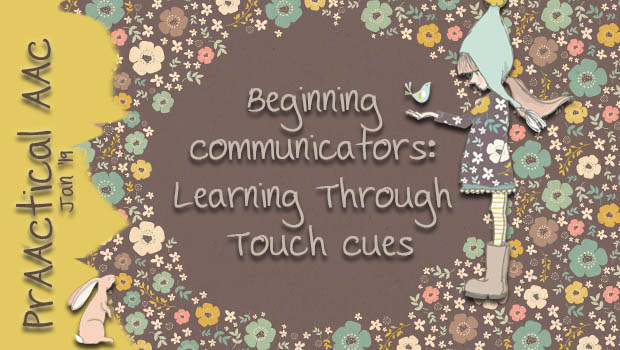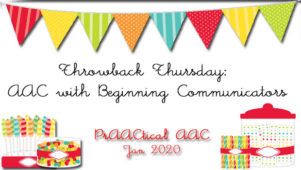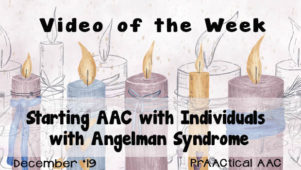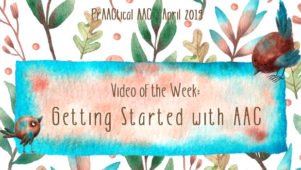Beginning Communicators: Learning Through Touch Cues

15-year-old Jodi has cerebral palsy and significant intellectual disability, among other things. In the most recent assessment of her motor, cognitive, communication, and self-help skills, scores ranged from 6-15 months. She spends most of her school day in her wheelchair. Jodi’s teacher affixes interesting toys to the lap tray so that she can explore them, but has become discouraged that Jodi mostly bangs them, puts them in her mouth, or tosses them to the floor. Her team struggles to find ways to teach Jodi to communicate more effectively.
10-year-old Nathaniel’s team notes that he shows little awareness of his classmates or teachers throughout the day, though he will smile and laugh when they take his hands and clap with him. As a younger child, he demonstrated more awareness of his surroundings but after his seizure activity spiked, it became more and more difficult to get him to engage.
6-year-old Jarrod has a diagnosis of deafblindness. His team introduced tangible symbols over a year ago, and do their best to incorporate them throughout the day. While there has some slight progress, they are concerned that it has been painstakingly slow and want to do more to help him gain the power of communication.
How can we help beginning communicators like Jodi, Nathaniel, and Jarrod? One strategy that can be explored uses Touch Cues, a set of physical cues that are used consistently on the learner’s body to provide information about what is about to happen next. For example, we may give 3 gentle taps on Jodi’s lower shin to make her aware that we are going to unfasten the strap holding her feet to the footrest. By using this signal prior to removing the strap each time, Jodi learns to expect that her feet will be freed when she feels these taps. Verbal explanations of what to expect accompany Touch Cues in most instances.
Touch Cues are used to build comprehension. They are generally provided on the body part that is affected by the activity, such as a gentle underarm upward pressure to signal being picked up or a tap on the back of the hand to indicate that something tangible is being offered for the learner to hold or explore. Touch cues are not a set of standardized movements but rather are a group of touch patterns that are selected based on the individual needs of the learner and the specifics of what is being communicated. Prior to suctioning Jodi, for example, her aide gently rubs Jodi’s collarbone in a circular fashion, simulating the vibrations of the suction machine. For Jarrod, we may introduce Touch Cues like stroking his cheek to indicate that it’s time to eat or a gentle shoulder squeeze as a greeting.
While originally developed for individuals who are unable to see or hear, the strategy has been effective with a broader spectrum of beginning communicator. Here are some resources to learn more about this strategy.
Have you used Touch Cues with the beginning communicators in your life? We’d love to hear about those experiences.
Filed under: Featured Posts, PrAACtical Thinking
Tagged With: beginning communicator, deafblind, Touch Cues
This post was written by Carole Zangari




